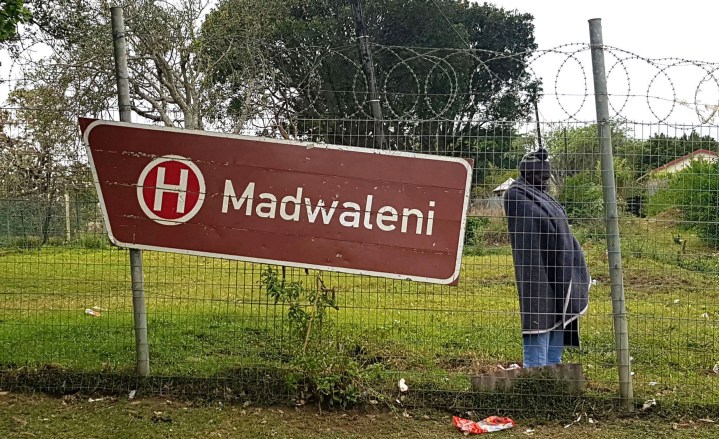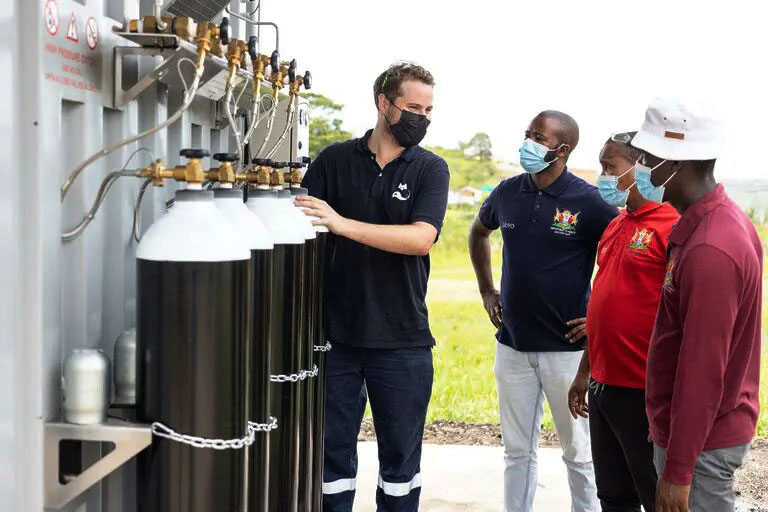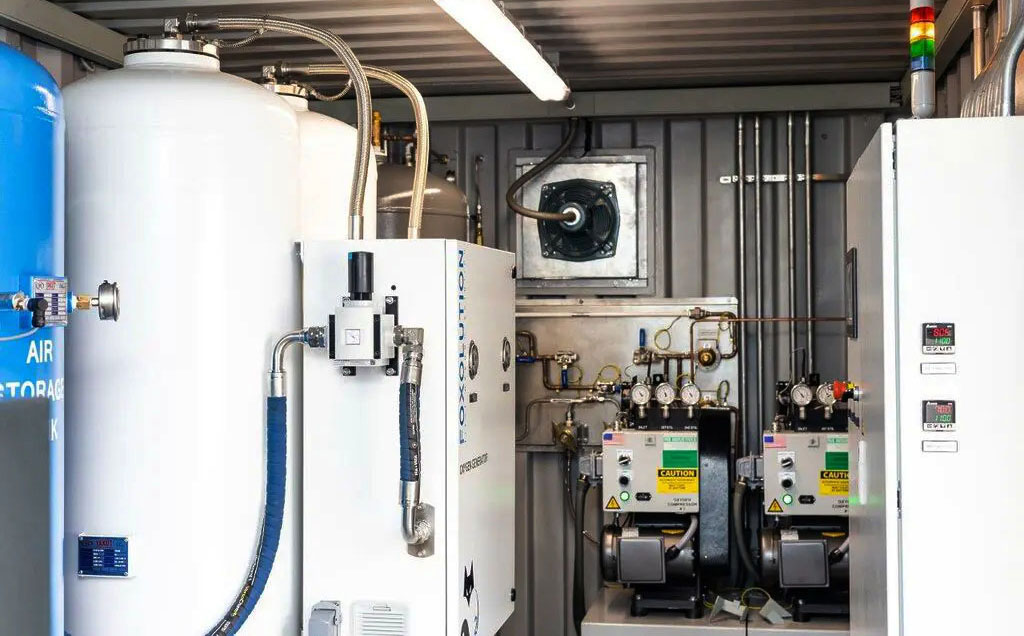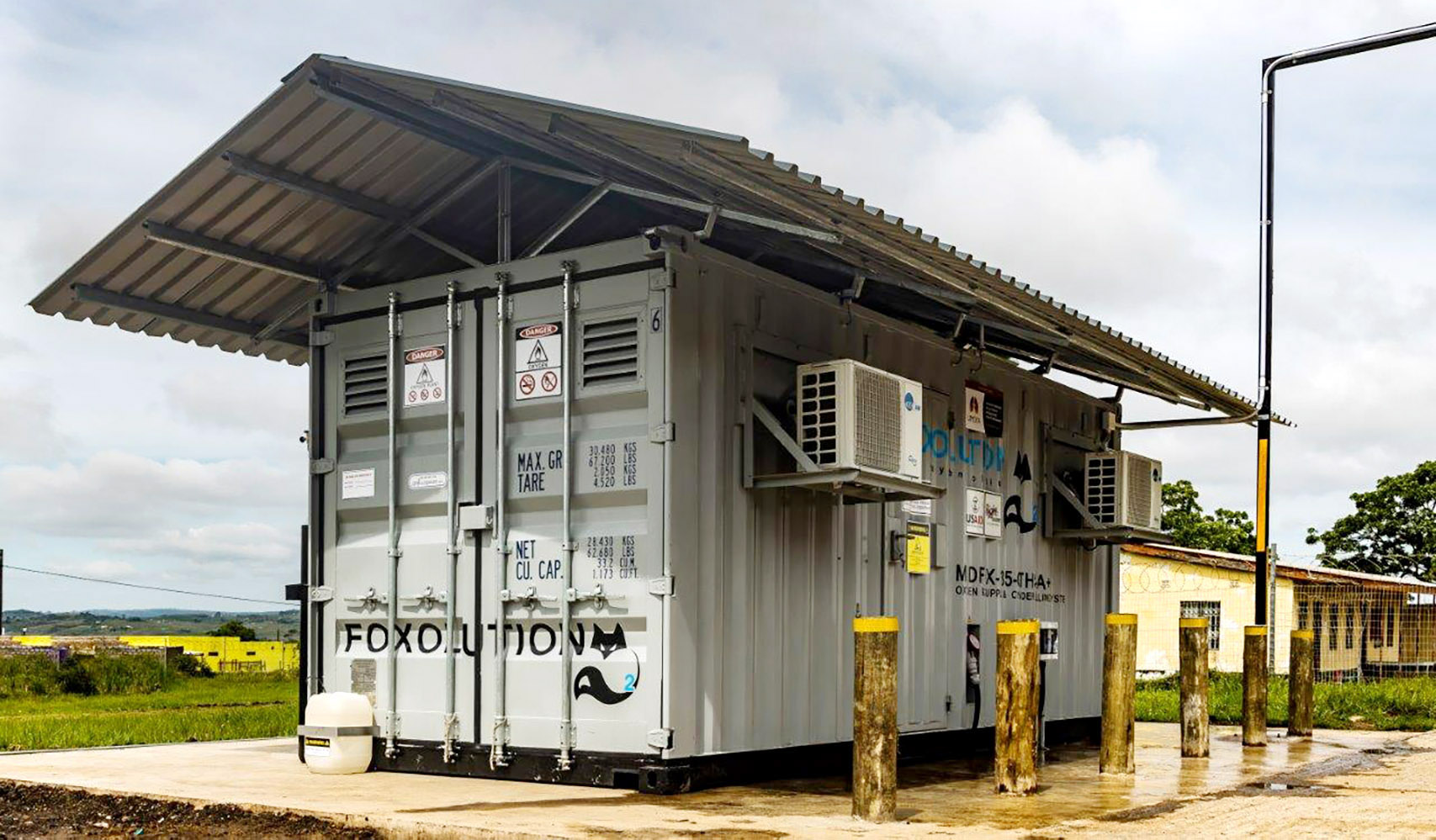SPOTLIGHT
Breathing easier: How Madwaleni Hospital started producing its own oxygen

During the first two years of the Covid-19 pandemic oxygen was a lifesaving consumable, but in many remote rural areas of the Eastern Cape, logistical challenges such as poor roads and long distances made distribution difficult. A group of doctors and engineers, however, developed a sustainable lifeline in the form of an oxygen generator at Madwaleni Hospital.
As the strain on the Eastern Cape’s oxygen supply increased during the first two years of the Covid-19 pandemic, health authorities often had to intervene and use their own trucks to ferry oxygen cylinders to deep rural areas – often over long distances and on bad roads. As elsewhere, healthcare workers at the Madwaleni District Hospital in the province’s rural Amathole District felt the pressure as oxygen supplies ran low.

A group of doctors and engineers developed a sustainable lifeline in the form of an oxygen generator at Madwaleni Hospital. (Photo: Umoya / Spotlight)
However, a group of doctors and engineers rolled up their sleeves and installed an oxygen concentrator that allowed the hospital to generate its own oxygen – something that became an important lifeline at the height of the pandemic for patients admitted to Madwaleni Hospital and the surrounding clinics. The concentrator they installed is a containerised Pressure Swing Adsorption (PSA) oxygen generator. (The Wikipedia page on PSA generators provides a good explanation of the basic scientific principles involved.)

The inside of the Pressure Swing Adsorption (PSA) oxygen generator. (Photo: Umoya / Spotlight)
How it started
In 2020 the group of professionals first gathered in East London and formed Umoya, a social enterprise company aimed at saving lives by finding innovative solutions to breathing problems. Initially, they developed an Oxygen-Efficient Respirator Aid device called OxERA that is both cost effective and oxygen efficient. Spotlight reported on that device here.
Installing a PSA oxygen generator was also decided on at that time, a decision that would soon make the 180-bed Madwaleni Hospital the first rural hospital to be able to produce its own oxygen. With its storage plant in Gqeberha, Afrox had been the sole medical oxygen supplier in the province until then.
“During the pandemic, our team engaged with the Madwaleni Hospital as there was a critical need for on-site generated oxygen during the Covid crisis and beyond. As a solution, we proposed that oxygen could be generated on site using PSA technology, which is well established and proven,” says Dave Morris, a professional engineer, and project manager of Umoya.
He says a funding and support relationship was then established between Umoya and Right to Care (a healthcare NGO) and the project was implemented using technology provided by Foxolution, a Cape Town-based business that also provided pro bono consulting services. It all cost around R5-million.
Up and running
With the continuous supply of oxygen to the hospital’s main ward and the ability to fill cylinders for use in the satellite clinics as well, the plant is already providing a stable supply of low-cost oxygen.
“In addition to the direct ward supply and cylinder filling capabilities,” says Morris, “the plant comprises a containerised 185-litre-per-minute PSA medical oxygen plant – complete with transferable cylinders and back-up and emergency reserve functionality. The plant has been operational since December 2021 after the hospital staff was trained on how to operate and safely use the oxygen.”

The containerised oxygen generator at Madwaleni Hospital. (Photo: Umoya / Spotlight)
“Plant ownership belongs to Right to Care. It was installed and is managed by Umoya, and Umoya is responsible for its maintenance and service. The hospital only pays for the electricity used. The plant has a nominal installed power demand of around 20kW and when operating at design capacity produces oxygen at a cost to the hospital of under R3 per kg, replacing cylinder oxygen delivered at a cost of around R28 a kg, excluding other costs such as cylinder rental,” he says.
“As we move forward, the Madwaleni plant will provide oxygen to patients who are being transported to hospitals by EMS and ensure that there’s adequate oxygen for the journey. If oxygen shortages occur, the plant can also serve as a backup for nearby healthcare facilities, such as Xhora, Dutywa, Willowvale Community Health Centre, and Butterworth Hospital,” he says.
Initiative welcomed
According to former Madwaleni Hospital Board Member and Mangweni Location community leader, Vuyani Mente, oxygen provision had often been a logistical challenge and patients had to wait long hours for oxygen. He says previously, some people had to travel to other areas.
“Thousands of vulnerable patients are breathing easier now thanks to this initiative that has made a huge impact on their lives. There has been a critical gap in oxygen therapy at the hospital for years. The oxygen plant will enable more patients to access quality and timely healthcare,” says Mente.
Mente says the oxygen plant also helps hospital staff who no longer have to make tough decisions about who gets oxygen. “The initiative is extremely beneficial to our region’s public health sector and not just to the hospital.”
Saving money
Eastern Cape Department of Health spokesperson Yonela Dekeda says after the oxygen concentration plant was installed in 2021, there were no significant Covid-19 peaks. “Nonetheless, we’ve been using it for our regular oxygen needs and it has already reduced our oxygen usage and saved us 88% in oxygen costs,” she says.
Visit Daily Maverick’s home page for more news, analysis and investigations
“With the installation of the plant, we have been working with the contractors to optimise our usage and the operation of the plant to balance the electricity cost of operating the plant with our oxygen needs. The plant supplies oxygen directly to patients in our wards, stores compressed oxygen in two backup cylinder manifolds for use during plant shutdowns, and fills cylinders for use throughout the hospital and clinics.”
Dekeda says when the plant is running, they need to ensure that all the oxygen it produces is used – either at the bedside or in compressed cylinders. “To save on electricity costs, we have developed a schedule for running the plant so that it runs for a minimum amount of time required to meet these needs, then shuts down and uses the back-up manifolds.
“All of this,” she says, “happens automatically, resulting in the plant running for eight to 12 hours a day, depending on our needs. Of the 74 oxygen points in the hospital, 47 are directly connected to the plant. To connect the oxygen reticulation system to the plant directly, the necessary infrastructure will be built. We are only required to run the plant for less than 50% of the time for it to meet our requirements, even though it can run continuously.”
In the event of rolling blackouts or planned shut-downs, Dekeda says the backup manifolds will automatically take over.
“Depending on how much oxygen we use, these can last for three to five days at the hospital. When the power goes out or load shedding occurs, the system is connected to the backup generator but is seldom needed to run.”
The 93% to 95% oxygen that is produced is “a very high concentration”, she says, “the equivalent to what is casually considered as ‘100% oxygen’ or ‘pure oxygen’ in reticulation systems installed in hospitals”.
Replicating the successes
Dekeda says with the plant now well utilised, they are aiming to fill oxygen cylinders at the hospital and provide them to neighbouring clinics and hospitals. “Logistics sometimes made it difficult for our neighbouring hospitals to access oxygen from Afrox,” she says.
Asked about the technology being used to establish similar oxygen plants at other rural health facilities, Morris says it is “completely replicable from a technology point of view and from a social investment point of view.
“The model whereby the funder remains the owner of the asset, I think, is more attractive than the donation of assets.” He says there are other investment models too. “But we like this one because it is aligned with Umoya’s social purpose. We are coming up to nearly a year of plant operation and have gathered lots of data to help us with replication.” DM/MC
*This article was published by Spotlight – health journalism in the public interest.




















 Become an Insider
Become an Insider
Your lead-in states: “A group of doctors and engineers, however, developed a sustainable lifeline in”.
I could not find in the article how any doctors should be credited with a constructive role in this development.
Change the story to: ” An NGO healthcare funder (Right to Care ) and two firms of Engineers (Umoya and Foxolution) developed and provided a sustainable lifeline . . .).